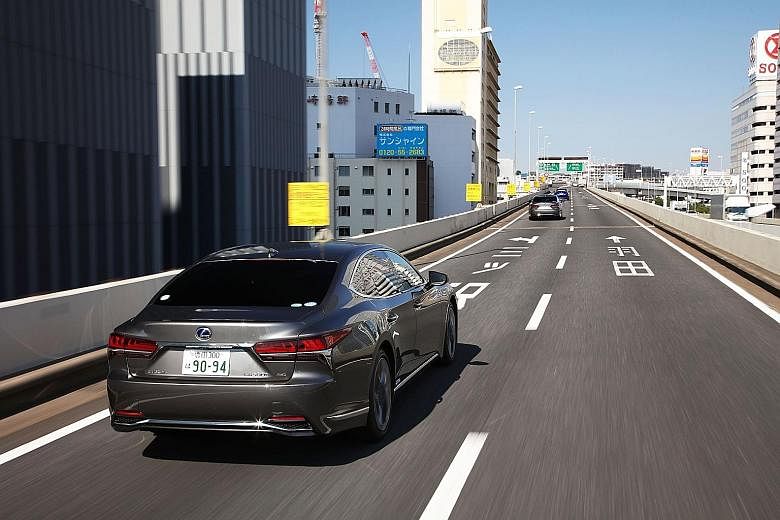When I was an inexperienced 20-year-old learner driver back in 1993, the driving instructor seated beside me would, occasionally, use his right hand to adjust the steering angle to keep the car in the centre of the lane.
And when I was instructed to merge into the next lane, he would keep a lookout for surrounding traffic and guide me accordingly, his hand hovering over the rim of the steering wheel.
More than two decades later, I'm behind the wheel of a car in Japan that can keep itself in the centre of the lane and even change lanes automatically. No instructor needed.
I am driving the Lexus LS500h, a 3.5-litre hybrid V6 luxury saloon equipped with "Lexus Safety System + A". The advanced active-safety package is designed for flagship models such as the latest LS limousine.
Included in the package is Lexus CoDrive, which bundles Dynamic Radar Cruise Control (DRCC) with Lane Tracing Assist (LTA) and Lane Change Assist (LCA).
Lexus' DRCC and LTA are not the first features of their kind to be approved for road use in Japan.
Nissan's similar technology, ProPilot, has been offered as an option on the Serena MPV since August last year and on the X-Trail SUV since June this year.
But Lexus LCA is a new development which is, at this time, road-legal only in Japan.
I try it on a 12km route between the Pacifico Yokohama convention centre and the Daikoku Parking Area, via the metropolitan highway. Activating the LCA is easy enough. It works together with the LTA function.
There is a small lane-change icon displayed next to the fuel level indicator. The icon changes from white to green when the LCA is on standby for activation. I push the indicator stalk up (to merge left) or down (to merge right) and hold it there for a few seconds.
If the LCA's front and rear corner-radars determine that it is safe for the car to merge into the next lane, there will be a beep before the system performs the manoeuvre, smoothly.
Concurrently, a specific in-dash graphic is shown, along with a text reminder that says, "Please look around, directly". I do exactly that since I do not fully trust the system just yet.
After a few tries, I am confident enough to let the LCA execute the lane change without me touching the steering wheel.
An executive in the public affairs department of Toyota Motor Asia Pacific says: "To prevent over-confidence, we do not refer to this technology as 'automated driving'. The driver has the responsibility for driving."
Yes, I agree the driver is ultimately responsible for the driving, even with these advanced driving aids. Which is the reason why my hands would instinctively hover near the wheel of the LS500h, ready to take over at any moment.
And the LTA system is ready to hand back control of the steering to the driver whenever necessary, such as on a narrow exit ramp that curves sharply.
Obvious warning beeps and various pop-up messages ("LTA Hold Steering Wheel", "LTA Steering Assist Unavailable" and "LTA Driver Attention Required") prompt the driver to take the wheel if necessary.
I can do, and drive, without these gadgets. After all, if I need technological assistance to keep the car in its lane and to change lanes safely on the highway, I probably should not be driving in the first place.
•The writer is the editor of Torque, a motoring monthly published by SPH Magazines.

